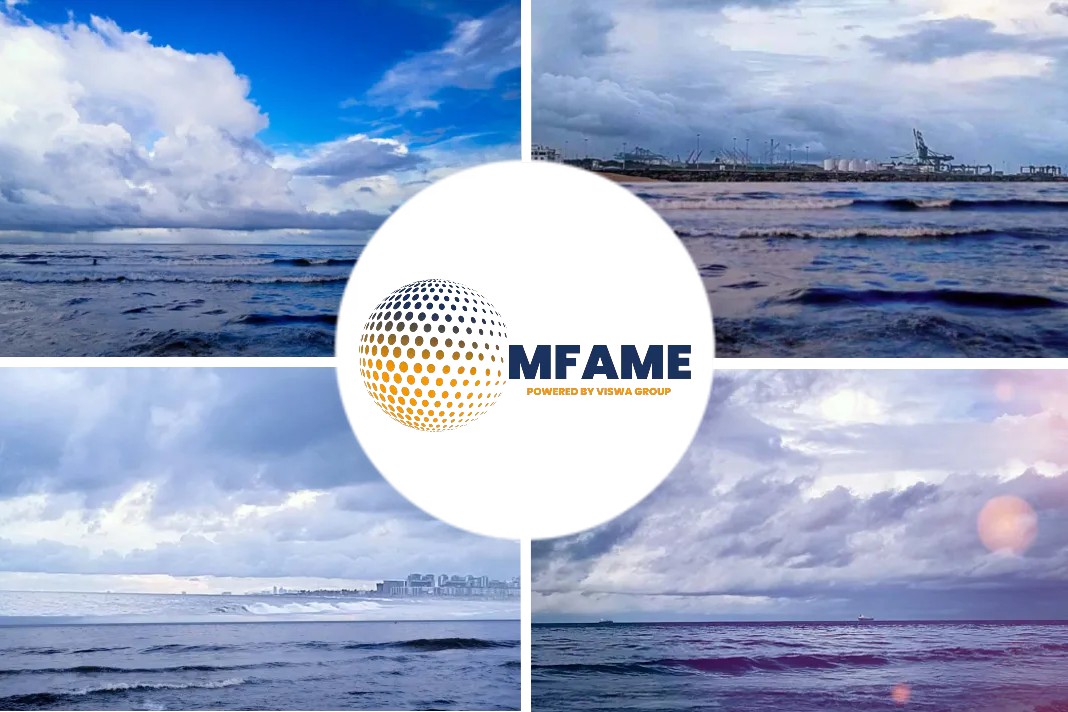Zeaborn Ship Management achieved Safer navigation, reduced crew workload and improved transparency with the fleetwide introduction of Wärtsilä’s Fleet Operations Solution on their managed wet fleet, says an article published in Wartsila website.
Why safe navigation matters?
“If a container vessel loses 1,500 boxes, it probably will make the news,” says Torsten Iborg, Fleet Navigation Officer at Zeaborn Ship Management. “If a tanker spills 1,500 tonnes of oil, it definitely will grab the headlines.”
It is a pointed reminder of why safe navigation matters for tankers – and why Zeaborn is upgrading its 12-strong managed product tanker fleet with Wärtsilä Voyage’s Fleet Operations Solution (FOS) digital navigation package.
Digitalization must support our strategy and overarching business goals. The main things you look for as a ship manager are to improve safety, increase efficiency and reduce costs while managing vessels according to owner’s performance and quality expectations.
– Matthias Ritters, Managing Director of Zeaborn Tankers.
Electronic Chart Display and Information System
FOS is a connected Electronic Chart Display and Information System (ECDIS), integrating voyage planning functions into the mandatory electronic chart system and enabling a ship-to-shore link from the system. It is a versatile tool, particularly when combined with data from other ship systems and external sources; dedicated modules enable a range of functions including route optimization, fuel optimization, energy efficiency reporting and charter party compliance monitoring.
For Zeaborn, it is the navigational benefits that are the most important. Automated route planning is one illustration. Manually charting the waypoints and deviations for multiple port calls can take a navigation officer up to five hours, on top of a daily eight-hour watch at sea or a grueling 12-hour shift at the port. Automatic plotting can reduce this to less than half an hour, dramatically reducing the potential for fatigue among bridge officers and cutting the risk of human error in navigation.
Customers in the loop
Enhanced transparency will not only benefit Zeaborn. The company already has a portal through which customers can receive the information and reporting that they expect, often in real-time and tailored to their particular requirements.
Mr. Ritters explains that this portal is constantly being developed as customer needs evolve, with new features being added. Although it is early days, he sees the potential to incorporate navigational data from FOS into the portal.
“If voyage data is shared with other stakeholders, we see big potential for further efficiencies and for safety. When we are looking into new tools these are features, we would expect to see. Once we feel confident with the tool and the functionality, then we will engage with our customers and see what can be shared and what information is relevant for them.”
While navigation is at the core of FOS, its capabilities are much wider when combined with other information sources on the ship, externally or both. One further FOS feature of potential interest for Zeaborn is monitoring and optimizing energy efficiency on vessels, says Mr. Ritters.
“If you have better access to better data then you can both execute voyages more energy efficiently and benchmark how the voyage has been performed, to learn how to improve efficiency,” Matthias Ritters, Managing Director of Zeaborn Tankers
“We already have systems in place to monitor fuel and energy efficiency, so a next step would be to decide whether to link the systems or maybe use additional functions on the energy efficiency side of the Wärtsilä solution.”
FOS implementation
The first step is to implement FOS, get crews and office staff familiar with the system, and put the focus on navigation and navigational safety. Although commissioning the systems has been more challenging than usual due to pandemic restrictions, the company is confident that FOS will be running on all 12 vessels in the next few months.
The simplicity of FOS was a key differentiator when Zeaborn was selecting systems meaning that the crew should be able to learn how to make the most of it quickly. And the fleetwide roll-out will also enable crews to switch between vessels easily without having to learn a new system.
As Mr. Ritters explains, Zeaborn’s approach to digital innovation is grounded in how new tools help it to reach its business goals. By improving navigational safety, reducing crew burden, and improving transparency of onboard operations, FOS is set to become a key part of the company’s drive towards safer and more efficient management of its customers’ fleets.
Mobile ECDIS
Another element of the FOS package will be welcomed by Zeaborn’s customers and their charterers as well as by the crew. The BridgeMate tablet features an independently backed-up ECDIS that can be used anywhere on the vessel to give officers full visibility of where the ship is and where it is heading. As well as providing redundancy if bridge systems or power should fail, the mobile tablet means that navigation officers can access ECDIS from the wings of the bridge while performing maneuvers.
“As a captain, I want to see what the ship is doing. When I manoeuvre from the wings I have only my eyes and instruments showing revolution and rudder angle. The BridgeMate gives access to information from the ECDIS, including rate of turn, speed from the bow, speed from the stern as well as movement of the vessel generally. This makes manoeuvring in port much easier, and much easier to plan.” – Torsten Iborg
Did you subscribe to our daily newsletter?
It’s Free! Click here to Subscribe!
Source: Wartsila
















